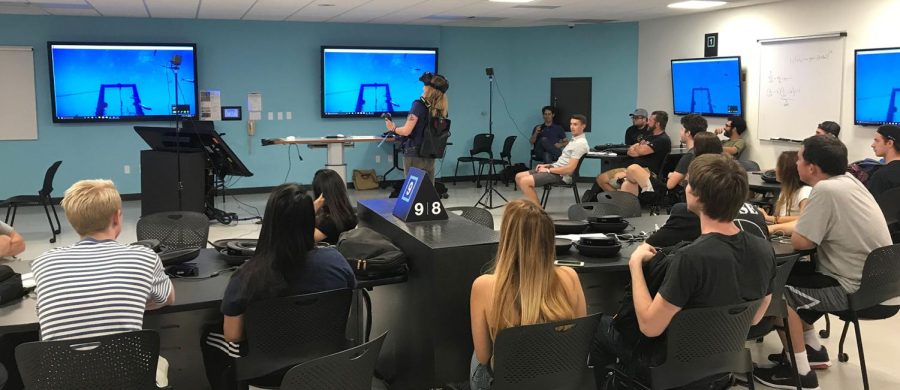San Diego State has doubled down on virtual and extended reality technologies by launching the Virtual Immersive Teaching and Learning (VITaL) Research Center dedicated to expanding usage across classrooms, campuses and disciplines.
The decision comes after the Information Technology Services unit on campus launched the VITaL initiative in fall 2017. According to a school press release, it served as an incubator for faculty to explore virtual and extended reality applications as potential tools they could adopt for stronger comprehension in students; the apps can mimic the intensity of a high risk medical situation or allow students to operate with rare situations without any of the necessary equipment or subjects while still receiving all the mandatory field experience.
For higher learning, virtual reality technology poses a lot of possibilities spanning across almost every topic of instruction. VITaL resources have already been taken advantage of by 56 faculty teaching 70 courses across all eight colleges at SDSU through the initiative. It is only expected to grow with the new research center, according to the press release.
The VITaL Research Center is led by Chief Information Officer Jerry Sheehan, Deputy CIO James Frazee and the Director of Information Technology Services Sean Hauze.
“The very ethos of VITaL is to understand if [the tech] actually matters or not, and that’s a really important consideration,” Sheehan said.
“We think that for our student population, both those that are first generation, those that are in underrepresented communities and diverse communities, it’s really important that they are given the opportunity to create in a virtual world,” Sheehan said. “We think it would be problematic if the only thing that exists in the virtual world is advertising which, without the voices from our campus, would be how the market forces would drive us.”
A landmark peer-reviewed study by PricewaterhouseCoopers (PwC) suggested that virtual reality learning enlists greater attention from students and better effectiveness overall than typical classroom learning. This study coupled with growing research and market interests gave the school confidence in the research center’s relevance.
“The tools will just become more and more reliable, affordable and easy to use as we look ahead,” Frazee said. “Essentially, you’re going to take your glasses off and feel dumber just like we have without our phones. Can you imagine not being able to answer every question and access every statistic on the planet from your pocket?”
The technology is noted to be especially important for the rural SDSU Imperial Valley campus as they have limited access to things like nursing mannequins and medical equipment. It poses an opportunity to provide higher learning across the board with the democratization of learning tools.
Initial projects faculty proposed with the launch of the center regard how the technology can enhance the way the school of Theater, Television, Film and New Media can adopt the tech to create and teach.
According to Learning Design and Technology Professor Kevin White, it is important to admit there are certain uses that would be redundant for virtual reality technology like reading and writing. However, immersion has been observed to foster a deeper connection to the material. Rather than using the tools to write, an art student could use the tech as a writing prompt being transported anywhere in the world with 360 degree photos to spark inspiration or thought exercises.
The move to virtual tools has been exponentially sped up by the onset of COVID-19, but it still has its fair share of health risks. For example, an entire class using the same headset can pose a problem in germ exchange. This has always been an issue, but becomes less of a risk as more supply access leads to less immediate contact.
With provisions in place faculty was still able to develop interactive moon phase simulations for astronomy students, demonstrate interactions between nano materials for engineering students and animate three-dimensional models of molecules and magnetic fields for chemistry and physics students.
As the research center was proposed based on award winning research and applications dedicated to the further understanding by students, VITaL Research Center Fellowship Grant Proposals are open to all faculty members from every discipline. According to the center, the deadline for preliminary proposals submitted by faculty is on Feb. 28.










